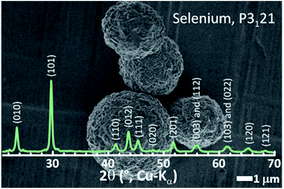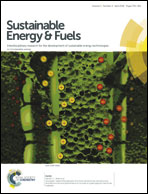The evolution of selenium cathodes: from infusion melts to particle synthesis†
Abstract
Selenium electrodes for Li–Se cells are currently created by infusing Se into carbon supports, which can be hazardous. Here we report safe, aqueous synthetic routes for obtaining selenium and sulfur–selenium hybrid particles, with controlled shapes and sizes, that facilitate the construction of cathodes with loadings >80 wt% and areal capacities >5 mA h cm−2.



 Please wait while we load your content...
Please wait while we load your content...